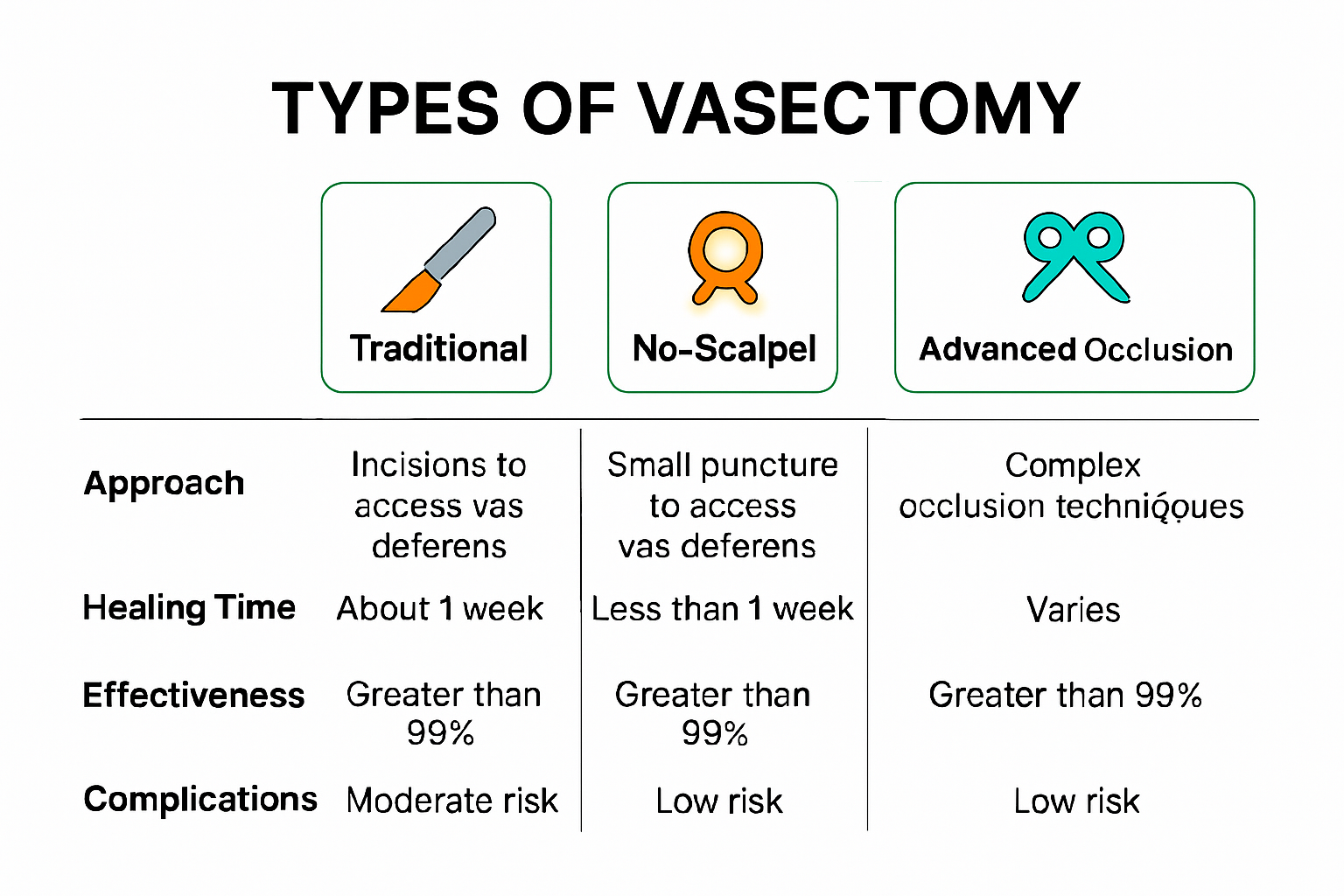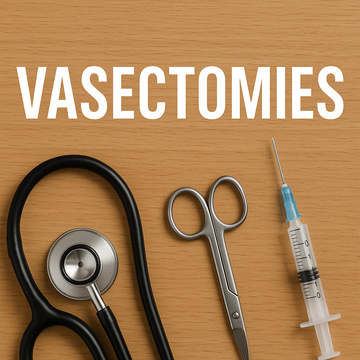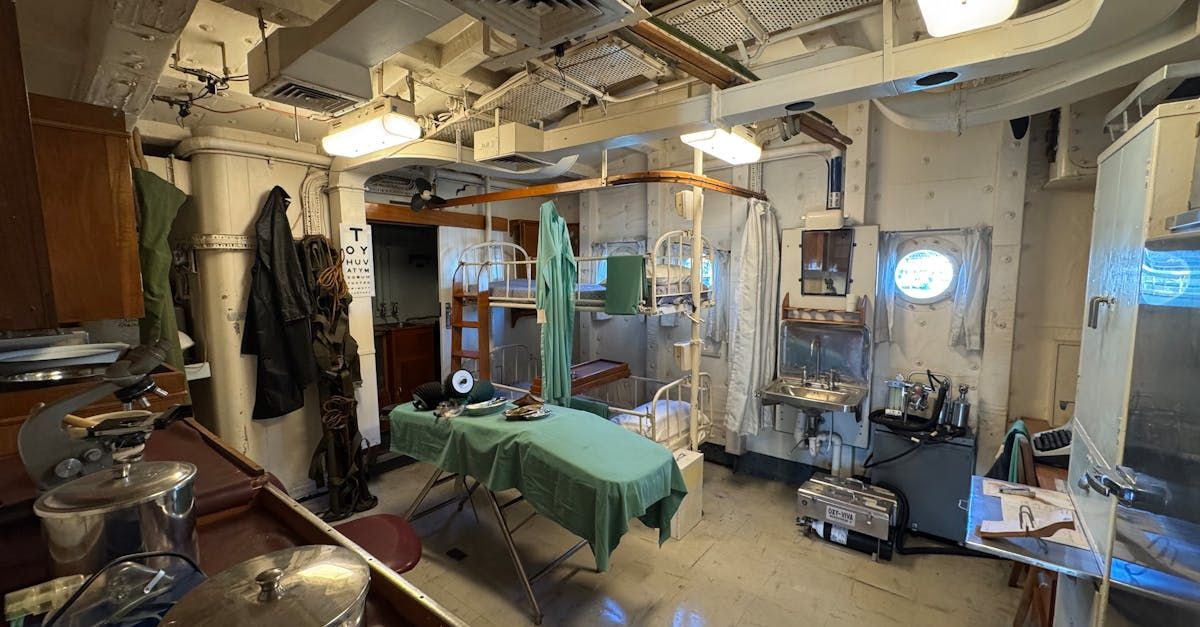Vasectomy procedures have seen some big changes over the years. One method now lets most men return to light activities in just 2 to 3 days, which is way faster than traditional recovery times. You might assume all vasectomies are pretty much the same, but the difference in healing, comfort, and even future options can be huge depending on which technique you pick. Surprising as it sounds, your choice of procedure could impact your whole experience far more than you think.
Table of Contents
- Key Types Of Vasectomy Procedures Explained
- How Each Procedure Affects Recovery And Results
- Vasectomy Confirmation And Next Steps After Surgery
- Choosing The Right Vasectomy For Your Situation
Quick Summary
| Takeaway | Explanation |
|---|---|
| Understanding Procedure Types is Crucial | Familiarize yourself with various vasectomy methods, including traditional surgical, no-scalpel, and advanced occlusion techniques, to make an informed choice for your reproductive health. |
| Recovery Times Vary by Technique | No-scalpel vasectomy typically allows for faster healing, with light activities resuming in 2-3 days, compared to 7-10 days for traditional methods, influencing your recovery expectations. |
| Confirmation of Success is Essential | Schedule a semen analysis 8-16 weeks post-surgery to verify the effectiveness of the vasectomy, ensuring you continue alternative contraception until confirmed. |
| Consider Your Health and Future Plans | Assess your medical history, pain tolerance, and potential future reproductive desires before choosing a procedure, emphasizing the personal nature of this decision. |
Key Types of Vasectomy Procedures Explained
Vasectomy procedures have evolved significantly, offering men multiple surgical approaches to permanent contraception. Understanding the different types of vasectomy procedures helps patients make informed decisions about their reproductive health. Modern surgical techniques prioritize minimizing invasiveness, reducing recovery time, and maximizing patient comfort.

Traditional Surgical Approaches
The conventional vasectomy procedure involves making small incisions in the scrotum to access and cut the vas deferens, the tubes that transport sperm. Surgeons traditionally used scalpels to create these openings, which required sutures and resulted in longer recovery periods. According to research from the American Urological Association, traditional methods often led to higher risks of postoperative complications such as infection and prolonged discomfort.
No-Scalpel Vasectomy Technique
The no-scalpel vasectomy (NSV) represents a significant advancement in surgical technique. Research published in the European Medical Journal demonstrates that this method involves a small puncture instead of traditional incisions, resulting in substantially lower risks of complications. The NSV approach uses specialized instruments to create a tiny hole and extract the vas deferens, which means:
- Minimal Tissue Damage: Reduced trauma to surrounding scrotal tissue
- Faster Healing: Significantly shorter recovery periods
- Lower Infection Risk: Smaller entry point decreases potential bacterial introduction
Surgeons performing NSV can complete the procedure more quickly and with greater precision. The technique has become increasingly popular due to its less invasive nature and improved patient outcomes. Jack At Home offers guidance on understanding these modern procedural approaches.
Advanced Occlusion Techniques
Beyond surgical entry methods, urologists now employ sophisticated techniques to permanently block sperm transportation. Open-ended vasectomy and mucosal cautery with fascial interposition represent cutting-edge approaches to ensuring contraceptive effectiveness. Research from the American Journal of Urology indicates that combining mucosal cautery with fascial interposition significantly enhances occlusive effectiveness, reducing potential recanalization risks.
Open-ended vasectomy, where the testicular end of the vas deferens remains unsealed, has shown promising results in reducing postoperative complications. This method may decrease the likelihood of epididymal congestion and sperm granuloma, potentially improving patient comfort during recovery. Findings from the American Academy of Family Physicians support these observations, highlighting the procedure’s potential benefits.
Patients considering vasectomy should consult with a qualified urologist to determine the most appropriate procedure based on individual health factors, surgical history, and personal preferences. Each technique offers unique advantages, and professional medical guidance remains essential in selecting the optimal approach.
Here is a table comparing the major vasectomy procedure types discussed above, summarizing their key features and differences:
| Procedure Type | Entry Method | Recovery Time | Complication Risk | Notable Benefits |
|---|---|---|---|---|
| Traditional Surgical | Scrotal incision (scalpel) | 7–10 days | Higher | Widely available, long track record |
| No-Scalpel Vasectomy (NSV) | Tiny puncture | 2–3 days | Lower | Minimal tissue damage, faster healing |
| Advanced Occlusion (e.g., open-ended, mucosal cautery with FI) | Varies | Varies | Lowest (with correct method) | Reduces recanalization, lower chronic pain risk |
How Each Procedure Affects Recovery and Results
Vasectomy recovery and outcomes vary significantly depending on the specific surgical technique employed. Understanding how different procedures impact healing, potential complications, and long-term fertility prevention is crucial for patients considering this permanent contraceptive method.
Recovery Timeline and Physical Healing
The recovery process differs substantially between traditional and modern vasectomy techniques. Research from Penn Medicine demonstrates that no-scalpel vasectomy (NSV) patients typically experience faster healing compared to conventional surgical approaches. Most men can return to light activities within 2-3 days and resume full physical activities within a week.
Traditional vasectomy methods involving larger incisions often require more extended recovery periods. Patients might experience:
- Increased Discomfort: More significant tissue trauma
- Longer Healing Time: Potential for 7-10 days of restricted activity
- Higher Risk of Complications: Greater likelihood of infection or hematoma
Effectiveness and Contraceptive Reliability
Both modern and traditional vasectomy techniques offer exceptional contraceptive reliability. The National Institutes of Health confirms that vasectomy procedures have an extremely low failure rate, typically less than 1%. The key differentiator lies in the occlusion technique used to prevent sperm transportation.
Advanced procedures like mucosal cautery with fascial interposition demonstrate enhanced effectiveness in permanently blocking sperm passage. Urological research indicates these techniques significantly reduce the potential for spontaneous recanalization, which could theoretically restore fertility.
Long-Term Physiological Implications
Modern vasectomy techniques prioritize minimizing potential long-term physiological disruptions. Open-ended vasectomy approaches, for instance, may reduce the risk of chronic testicular pain and epididymal congestion. Jack At Home offers comprehensive insights into understanding the nuanced recovery process and potential physiological adaptations following the procedure.
Patients should recognize that while surgical techniques differ, the fundamental goal remains consistent: permanent contraception with minimal medical intervention. Consulting with a urological specialist helps individuals select the most appropriate procedure based on their unique health profile, ensuring optimal outcomes and patient satisfaction.
Ultimately, successful vasectomy recovery depends on following medical recommendations, maintaining proper post-surgical care, and completing recommended fertility verification tests to confirm the procedure’s effectiveness.
Below is a quick-reference table that summarizes the typical recovery timelines and outcomes for different vasectomy techniques, making it easier to compare recovery expectations:
| Procedure Type | Light Activity Resumption | Full Recovery | Common Short-Term Effects |
|---|---|---|---|
| Traditional Surgical | 7–10 days | 2–3 weeks | More discomfort, higher infection risk |
| No-Scalpel Vasectomy (NSV) | 2–3 days | 1 week | Minimal swelling, low infection risk |
| Open-Ended/Advanced Occlusion | Varies (often 2–5 days) | ~1 week+ | Less congestion, lower chronic pain risk |
Vasectomy Confirmation and Next Steps After Surgery
After undergoing a vasectomy, patients enter a critical phase of confirming the procedure’s effectiveness and managing their reproductive health. The journey does not end with the surgical procedure but continues through careful follow-up and verification steps.
Immediate Post-Surgical Recommendations
In the initial weeks following a vasectomy, patients must adhere to specific guidelines to ensure proper healing and prevent complications. According to the Centers for Disease Control, patients should refrain from ejaculation for approximately one week to allow surgical sites to heal and vas deferens occlusion to stabilize. During this period, patients can expect:
- Restricted Physical Activity: Minimal lifting and strenuous exercise
- Pain Management: Use of prescribed or over-the-counter pain relief
- Wound Care: Keeping surgical areas clean and dry
Fertility Verification Process
Confirming the vasectomy’s success is paramount. Urology Health experts emphasize that sperm can remain present in semen for several months post-procedure. Patients must continue using alternative contraception methods until a comprehensive semen analysis confirms complete sterility.
The recommended timeline for semen analysis is typically 8-16 weeks after the vasectomy. Jack At Home provides comprehensive guidance on navigating this critical verification stage. Key considerations include:
- Timing: Perform semen analysis between 8-16 weeks post-procedure
- Multiple Tests: Often requires two consecutive negative sperm count analyses
- Comprehensive Analysis: Checking for complete absence of sperm
Long-Term Reproductive Health Monitoring
While a successful vasectomy provides permanent contraception, ongoing reproductive health monitoring remains important. Patients should schedule regular check-ups with their urologist and remain attentive to any unusual symptoms. Research indicates that while vasectomies are highly effective, rare complications can occur.
Patients should be prepared for potential follow-up procedures or additional testing if any concerns arise. The post-vasectomy period is not just about confirming sterility but maintaining overall reproductive and general health.
Ultimately, successful vasectomy confirmation requires patience, adherence to medical recommendations, and proactive engagement with healthcare professionals. By following recommended protocols and completing necessary verification tests, patients can confidently transition to their new reproductive status.
Choosing the Right Vasectomy for Your Situation
Selecting the most appropriate vasectomy procedure requires careful consideration of individual health factors, personal preferences, and long-term reproductive goals. The decision extends beyond a simple medical intervention and involves understanding the nuanced differences between available surgical techniques.
Medical History and Personal Health Considerations
Patients must thoroughly evaluate their medical background before choosing a vasectomy procedure. Research from the National Academies of Sciences highlights that individual medical histories can significantly influence procedure selection. Key factors to consider include:
- Surgical History: Previous scrotal procedures or medical conditions
- Pain Tolerance: Variations in surgical approaches impact discomfort levels
- Healing Capabilities: Individual physiological response to surgical interventions
Consulting with a urological specialist provides personalized insights into which technique best suits individual health profiles. Some patients may be better candidates for minimally invasive procedures like no-scalpel vasectomy, while others might require more traditional approaches.
Advanced Surgical Techniques and Effectiveness
Modern vasectomy procedures offer sophisticated options beyond traditional methods. Scientific research demonstrates that advanced techniques like fascial interposition and cauterization can significantly improve procedure effectiveness. Specifically:
- Fascial Interposition: Placing tissue between vas deferens ends increases azoospermia rates
- Cauterization: Reduces potential sperm recanalization risks
- Occlusion Methods: Different techniques impact long-term contraceptive reliability
Patients should discuss these advanced techniques with their healthcare provider to understand potential benefits and limitations. Jack At Home offers comprehensive guidance on understanding these nuanced procedural choices.
Future Reproductive Considerations
While vasectomy is considered a permanent contraception method, patients must carefully contemplate potential future reproductive desires. Some individuals might consider potential reversal options or preservation of reproductive potential. Factors to evaluate include:
- Age and Family Planning: Current and potential future family goals
- Relationship Status: Potential changes in long-term partnership dynamics
- Personal Reproductive Preferences: Potential desire for future biological children
Though vasectomy reversal is possible, it becomes increasingly complex and less successful with time. Patients should approach the decision with comprehensive understanding and careful reflection.
Ultimately, choosing the right vasectomy procedure is a highly personalized decision. Open communication with healthcare professionals, thorough understanding of individual health factors, and careful consideration of long-term reproductive goals are essential in making an informed choice. Patients are encouraged to ask detailed questions, review multiple options, and select a procedure that aligns with their unique medical and personal circumstances.
Frequently Asked Questions
What are the different types of vasectomy procedures?
Vasectomy procedures primarily fall into three categories: traditional surgical approaches, no-scalpel vasectomy techniques, and advanced occlusion techniques. Each method varies in terms of recovery time, effectiveness, and invasiveness.
How long does it take to recover from a vasectomy?
Recovery time varies by technique. Typically, no-scalpel vasectomy allows most men to return to light activities within 2-3 days, while traditional vasectomy methods might take 7-10 days for recovery.
How can I confirm that my vasectomy was successful?
To verify the effectiveness of your vasectomy, a semen analysis is recommended 8-16 weeks post-surgery. This test checks for the presence of sperm to ensure sterility.
What factors should I consider when choosing a vasectomy procedure?
Consider your medical history, pain tolerance, and future reproductive plans. Consulting with a urologist can help you evaluate which vasectomy technique best suits your personal health and lifestyle.
Recommended
- Vasectomy Procedure Explanation: What to Expect in 2025
- Vasectomy Patient Education: What Every Man Needs to Know
- Vasectomy Reversal Options: What to Know Before Deciding
- How to Confirm if Your Vasectomy Was Successful
- Vasectomy Versus Contraception: Informed Choices for 2025
- Vasectomy Reversal: Key Facts for Men & Couples






